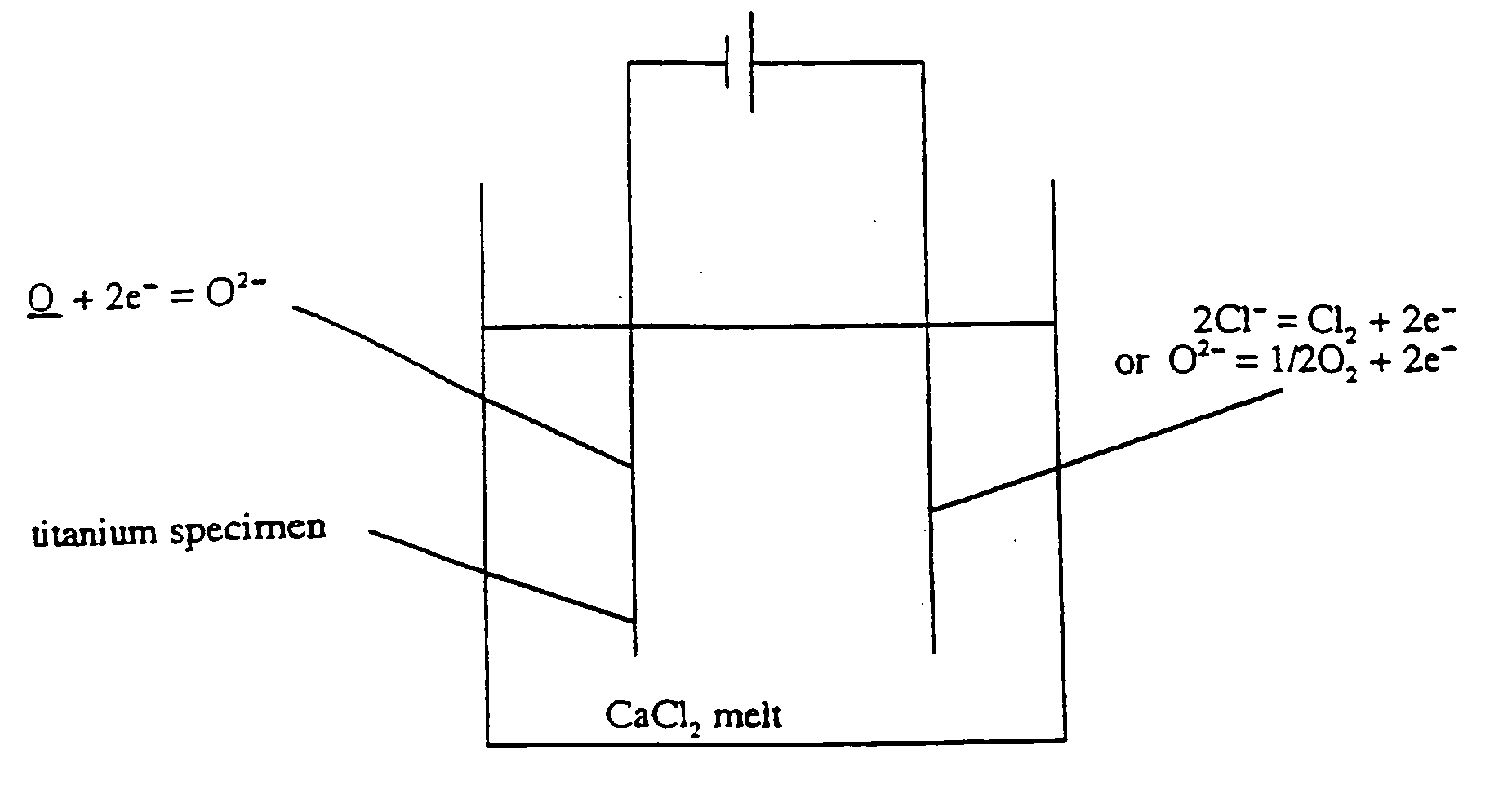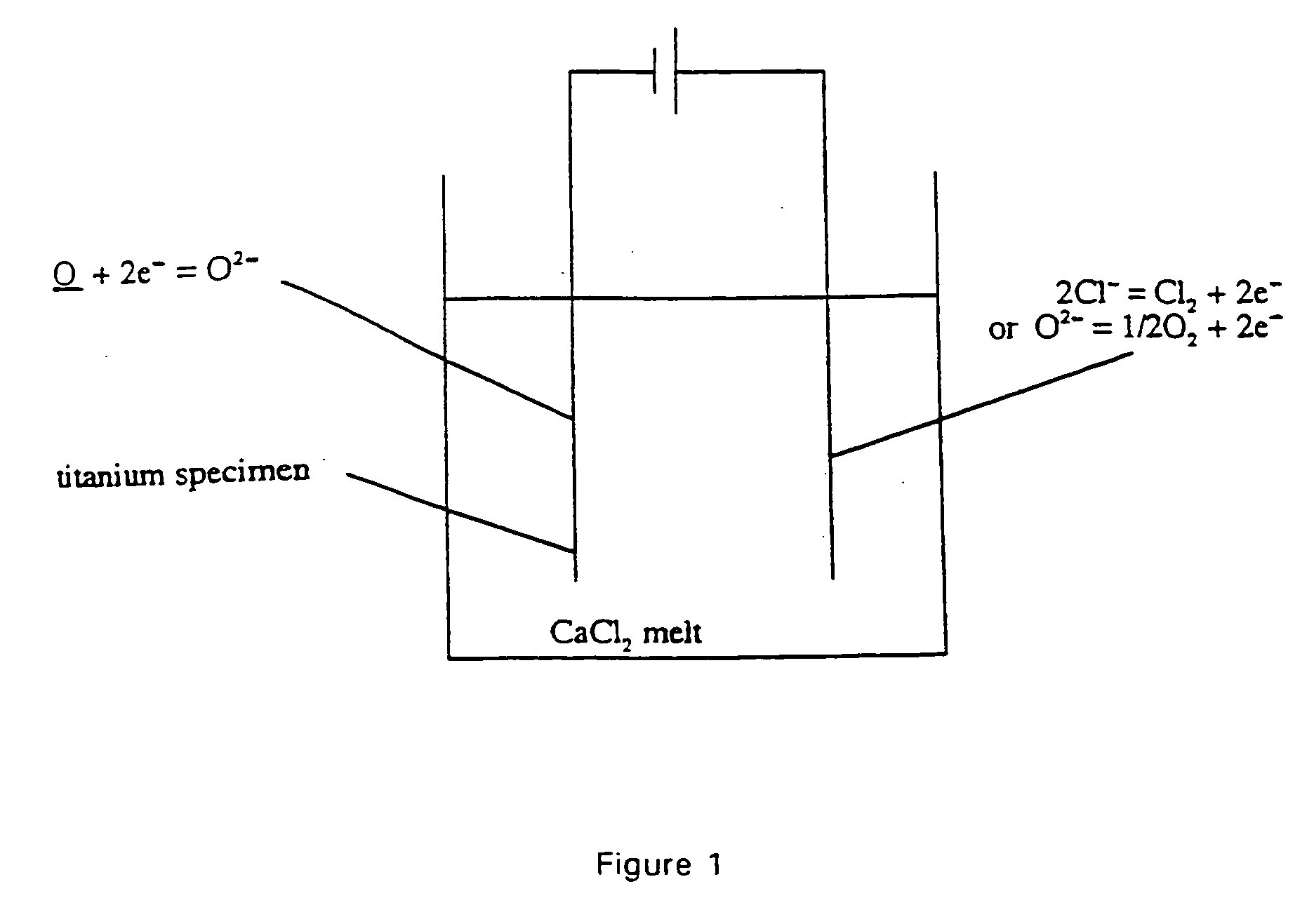Removal of oxygen from metal oxides and solid solutions by electrolysis in a fused salt
a technology of fused salt and metal oxide, which is applied in the direction of electrochemical machining apparatus, crystal growth process, solid state diffusion coating, etc., can solve the problems of high reactivity, serious loss of ductility, and oxygen damage, so as to reduce or remove oxygen
- Summary
- Abstract
- Description
- Claims
- Application Information
AI Technical Summary
Benefits of technology
Problems solved by technology
Method used
Image
Examples
example 1
[0042] A white TiO.sub.2 pellet, 5 mm in diameter and 1 mm in thickness, was placed in a titanium crucible filled with molten calcium chloride at 950.degree. C. A potential of 3V was applied between a graphite anode and the titanium crucible. After 5 h, the salt was allowed to solidify and then dissolved in water to reveal a black / metallic pellet. Analysis of the pellet showed that it was 99.8% titanium.
example 2
[0043] A strip of titanium foil was heavily oxidised in air to give a thick coating of oxide (c.50 mm). The foil was placed in molten calcium chloride at 950.degree. C. and a potential of 1.75V applied for 1.5 h. On removing the titanium foil from the melt, the oxide layer had been completely reduced to metal.
[0044] Examples 3-5 relate to removal of dissolved oxygen contained within a metal.
example 3
[0045] Commercial purity (CP) titanium sheets (oxygen 1350-1450 ppm, Vickers Hardness Number 180) were made the cathode in a molten calcium chloride melt, with a carbon anode. The following potentials were applied for 3 h at 950.degree. C. followed by 1.5 h at 800.degree. C. The results were as follows:
3 Vickers Hardness Oxygen V (volt) Number Content 3 V 133.5 <200 ppm 3.3 V 103 <200 ppm 2.8 V 111 <200 ppm 3.1 V 101 <200 ppm
[0046] The 200 ppm was the lowest detection limit of the analytical equipment. The hardness of titanium is directly related to the oxygen content, and so measuring the hardness provides a good indication of oxygen content.
[0047] The decomposition potential of pure calcium chloride at these temperatures is 3.2 V. When polarisation losses and resistive losses are considered, a cell potential of around 3.5V is required to deposit calcium. Since it is not possible for calcium to be deposited below this potential, these results prove that the cathodic reaction is:
O+2...
PUM
| Property | Measurement | Unit |
|---|---|---|
| temperature | aaaaa | aaaaa |
| thickness | aaaaa | aaaaa |
| thickness | aaaaa | aaaaa |
Abstract
Description
Claims
Application Information
 Login to View More
Login to View More - R&D
- Intellectual Property
- Life Sciences
- Materials
- Tech Scout
- Unparalleled Data Quality
- Higher Quality Content
- 60% Fewer Hallucinations
Browse by: Latest US Patents, China's latest patents, Technical Efficacy Thesaurus, Application Domain, Technology Topic, Popular Technical Reports.
© 2025 PatSnap. All rights reserved.Legal|Privacy policy|Modern Slavery Act Transparency Statement|Sitemap|About US| Contact US: help@patsnap.com



